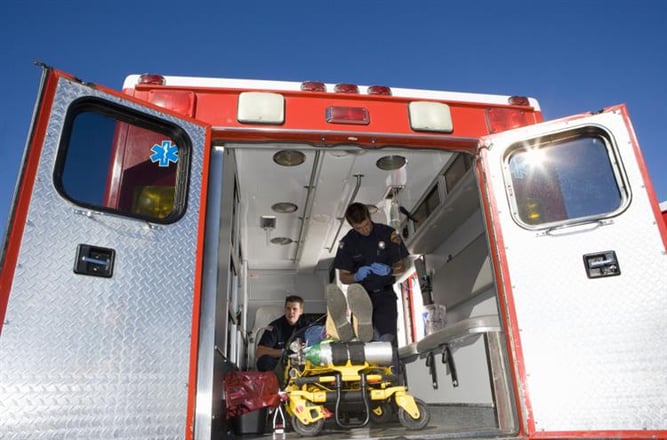 Paramedics rely on a multitude of tools. Imagine treating the range of patients you encounter in the field – from cardiacs, to trauma, to pediatrics – without a wide assortment of tools from which to choose. Impossible, right? And although some of these tools are essential to the job, and dictated by local and national standards, each tool contains various components that make it ideal for the system within which you work.
Paramedics rely on a multitude of tools. Imagine treating the range of patients you encounter in the field – from cardiacs, to trauma, to pediatrics – without a wide assortment of tools from which to choose. Impossible, right? And although some of these tools are essential to the job, and dictated by local and national standards, each tool contains various components that make it ideal for the system within which you work.
Think about it. There are several types of cardiac monitors to choose from, all of which must be able to perform those vital functions – defibrillation, cardioversion, pacing, and monitoring – yet the model must be suited for your particular system. Size, portability, and cost come into play when choosing the right monitor; just as they do for any piece of equipment that goes on your truck. And as our tools improve in design and function, there are more considerations to take into account when selecting the right tools for your agency.
Such is the case when deciding on a portable suction unit.
Choosing a Suction Unit…
Today, there are several styles of portable suction units to choose from. But before you choose, it is wise to consider the various components that go into making your portable suction unit ideally suited for your situation. Let’s start with size.
Bigger is Not Always Better
The size of your suction unit must meet the demands of your EMS system and will depend on several factors. First, is manpower. You may work in a metropolitan area where EMS personnel are in abundance on scene. In joint response systems, where Fire and EMS respond together, you may have paramedics stumbling over each other to reach the patient. In these situations, portability becomes less of an issue, since there are plenty of hands available to haul equipment. But what if you work in a rural setting, where it’s just you and your partner? Backup may be minutes and miles away, so your portable suction unit should be small, lightweight, and fit easily into your airway bag. That way, it’s always there when you need it.
Power Needs
What about powering your suction unit? Once again, your surroundings come into play. In urban systems where response times are short, battery life is less of an issue. But what if you work in a rural area, where transport times are compounded by distance and terrain? Reliable batteries and the ability to utilize alternative power sources to run your suction unit are valuable options in rural settings.
Special Patients
What about the populations you serve? Think about the calls you respond to. Do you have large numbers of elderly patients? What about pediatrics? Both of these populations require special considerations; especially when it comes to portable suction. The elderly most likely have dental hardware in place, along with delicate oral tissues that require a more cautious approach to suctioning. Pediatric patients also require extra caution. The younger the patient, the smaller the nose and mouth. Having adjustable vacuum pressure and an assortment of suction tips allows you to effectively suction the old and the young without damaging their oral or nasal passages.
Catheters, Big and Small
Tip size also comes into play, depending upon what type of secretions you encounter. Simple mucous or phlegm can easily be handled by smaller tipped catheters. But what if your patient is vomiting, or has traumatic injuries? A  will allow you to effectively and efficiently clear the airway. And when it comes to the airway, every second counts.
will allow you to effectively and efficiently clear the airway. And when it comes to the airway, every second counts.
A paramedic’s tools are crucial to the efficacy of his or her treatment capabilities and can drastically improve patient outcome. And your portable suction unit is one of the most vital tools in your EMS toolkit. So when choosing a unit, be sure to select one that is reliable, effective, and suited to the needs of your service.














